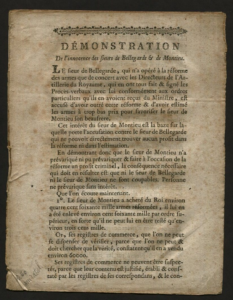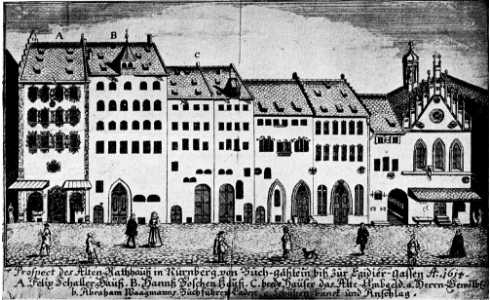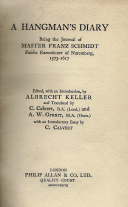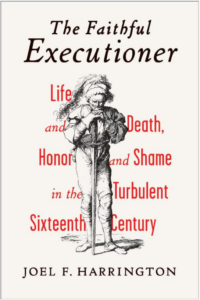In a curious turn of events Columbus Day has made strange bedfellows of several different groups. In the 19th century the Know Nothings and other anti-immigrant groups like the Ku Klux Klan 1 opposed the celebration of Columbus Day because of a Protestant based North American nativism with strong underlying anti-Catholic sentiments. The Klan and Know Nothings along with other anti-immigrant groups, wanted to end migration from Catholic countries like Ireland and Italy. This opposition was spurred by the hope of preserving their Northern European way of life from the contamination of undesirable peoples. What better way to make their point than to deny that Columbus discovered America thus taking away the credibility of that national and cultural identity.
In the 20th century, with the rise of far-left political adoption of the Pan American Native movements, various groups banded together to decry any European immigration, extending the ban to any White colonial presence. 2 If you push their argument to its limit, extreme adherents would suggest that all immigrants from the colonial times should go home to Europe, atone for their great sins, and take their culture with them. These groups often reflect back to the Early Modern view of the Noble Savage, of harmonious tribes unspoiled by civilization, living as one with nature. Indeed, settlers from European should not portray any Native cultural representations as cultural appropriation is decried as a great evil.
As part of their argument the supporters of this mindset point out that it is a racist myth that Columbus discovered the Americas and that it is only with recent secular enlightened studies that we see that America was probably discovered by the pagan (good) Vikings, rather than the Catholic (bad) explorers. A second argument is to attack Columbus as the origin of a genocide of the North American native peoples. Columbus personally created the enslavement of whole continents. We will not address this second attack except to point out that many died on both sides of this contact of civilizations. As a partial answer to this criticism it is known that mayhem is a frequent result of any contact between previously isolated groups, animal and human.
Each of these critiques of Columbus are misguided and should be addressed — maybe on another occasion. What I would like to address here is the myth that European awareness of pre-Columbian contact is only now recognized and that it is our modern secular humanism that gives us this understanding. I will point to one example from our library.
Starting in 1855, and over the next decade, Sir Arthur Helps (1813-1875) published the four-volume work, The Spanish conquest in America and its relation to the history of slavery and to the government of colonies. 3 Our Library has the first two volumes from the 1855 printing and the final two volumes from the 1900 edition.
Helps was an English writer and served in numerous positions in the British government. Based on his extensive research in the Spanish archives of Madrid, consulting primary documentation, he had extensive exposure to many first-hand accounts of the period of exploration. Helps was one of the early supporters of the abolition of slavery and took a leading role in shaping public opinion against it. Given his Victorian perspective there is much to criticize as well as to praise in his works. One reviewer noted that: “… the work of Sir Arthur Helps…is so very good and so very bad, so delightful as presentation of the long-established versions of events…” etc4. Regardless of the criticisms Helps work is seen as a valuable follow on to the writing of de las Casas from centuries before. 5
Helps starts his account of the exploration of America with the following statement:
Here Helps cites Joshua Smith’s publication “The Discovery of America by the Northmen in the Tenth Century” 7 thus it is clear that there is a recognition that Columbus was not the first to the North American Continent. Recognition of prior exploration and contact with the Americas was in the air. While Columbus did not know of continents between Europe and Asia others knew of Greenland, Vineland and other lands that were not the Indies. Similar to the myth that the common understanding in Europe was that the earth was flat, classical scholars had determined the circumference of the word with great accuracy. Even though it was misplaced, Atlantis was suspected to be in the Atlantic Ocean.
As to Columbus’s character a good indication of Helps estimation can be seen in this passage:
Such was the hero under whose guidance we are now called to enter upon a wider sphere of the history of discovery and colonization; and also, somewhat to his shame, the mournful annals of slavery 8
From one perspective this view is more balanced than the political hyperbole that we find in today’s popular press.
Columbus is a convent foil for those who have an agenda. With the passage of time we are further removed from the real person of Columbus. No “modern” historian or critic has walked in his shoes, probed his good and bad characteristics. The animus of those who despise all Dead White Men, their religion and their culture, want to remove their legacy. It is never in the interest of such persons to carefully weigh the facts. The facts are: that it was known that Columbus was not the first to discover North America; that there is enough evidence that Columbus was a much more complex person than the stereotyped wanton wrecker of a whole continent; that he did not personally precipitated genocide. It is imperative that a more balanced view of the good and bad of the meeting and merging of two diverse cultural empires be communicated and to recognize that there are forces at work that are greater than any one individual or civilization. There should be room to celebrate the goodness of all the peoples: Native, Viking, European, Catholic, Protestant, Pagan, and learn from their mistakes and discard those practices that are built on hate and oppression of others. Helps, for all his faults, was appalled by slavery and the bondage of humans. He used the tools at his disposal to spread this message. Let’s build on the foundation that he and those who followed established.
Since publishing this I have received feedback from one scholar who I greatly admire. That conversation will continue here (password protected):
—–
DLWA Call Number: F1411 .H48 1855
Worldcat: Link
- Title: The Spanish conquest in America and its relation to the history of slavery and to the government of colonies.
- Author: Sir Arthur Helps
- Language: English
- Setting: Exploration, Slavery
DLWA Call Number: F1411 .C33 B8 1953
Worldcat: Link
- Title: The tears of the Indians : being an historical and true account of the cruel massacres and slaughters of above twenty millions of innocent people.
- Author: Bartolomé de las Casa
- Language: English
- Setting: Exploration, Slavery
—–
- Anbinder, Tyler. 1992. Nativism and slavery: the northern Know Nothings and the politics of the 1850’s. New York: Oxford University Press. P. 190.
- Churchill, Ward. 2006. A little matter of genocide: holocaust and denial in the Americas, 1492 to the present. San Francisco: City Lights Books. (a much discredited author).
- Helps, Arthur. 1855. The Spanish conquest in America and its relation to the history of slavery and to the government of colonies. London: J.W. Parker and Son.
- G. P. W., The Spanish Conquest in America and its Relation to the History of Slavery and to the Government of Colonies. By Sir Arthur Helps. Edited by M. Oppenheim. (New York: John Lane. 1900–1904. Four vols., pp. xxxviii, 369; x, 365; xv, 400; xi, 374, The American Historical Review, Volume 10, Issue 3, April 1905, Pages 641–642, https://doi.org/10.1086/ahr/10.3. p. 641.
- Casas, Bartolomé de las, and John Phillips. 1953. The tears of the Indians: being an historical and true account of the cruel massacres and slaughters of above twenty millions of innocent people committed by the Spaniards in the islands of Hispaniola, Cuba, Jamaica, etc. As also, in the continent of Mexico, Peru, and other places of the West Indies, to the total destruction of those countries. Stanford, Calif: Academic Reprints.
- Helps, op. cit. p. 79.
- Smith, Joshua Toulmin. 1842. The discovery of America by the Northmen in the tenth century: comprising translations of all the most important original narratives of this event : to which is added, an examination of the comparative merits of the Northmen and Columbus. London: William S. Orr & Co.
- Helps, op. cit. p.82.
–DLW






